After a gap of 10 years we returned to these islands in the mid-Atlantic Ocean. We stayed on 3 islands in the Central Group, and visited 2 more.
Pico
Pico is one of the largest islands in the Azores. With the centre and west dominated by the mountain of the same name, most of the towns and villages are around the coast
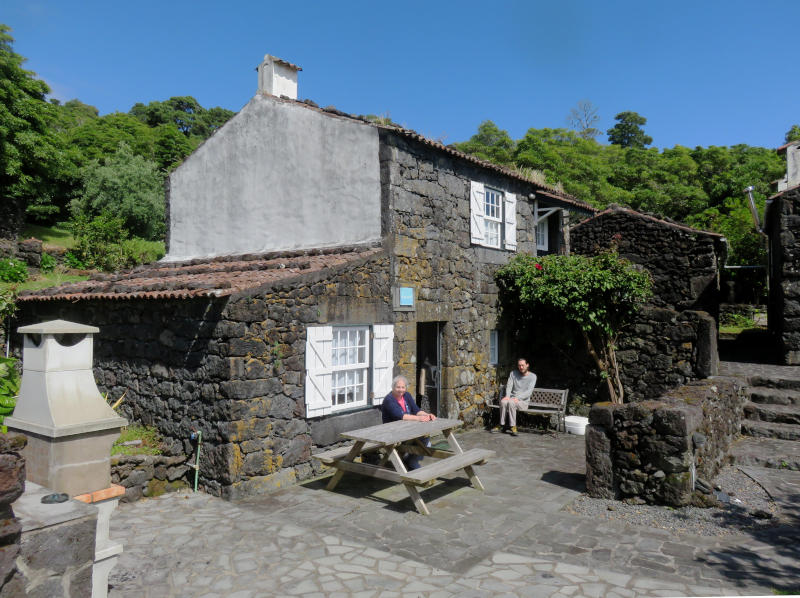
Miriam and Martin outside our cottage in Praínha, on the north coast of the island
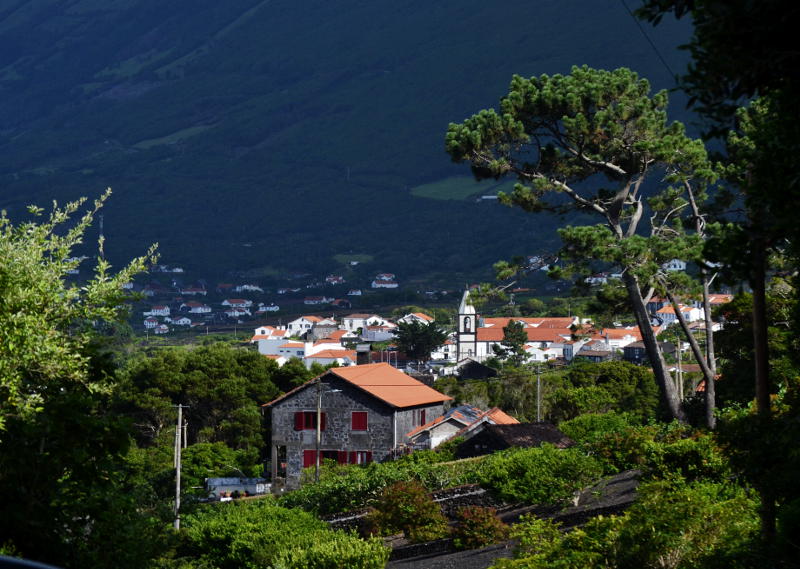
The view towards Praínha from our house: the hillside behind was almost always in shadow
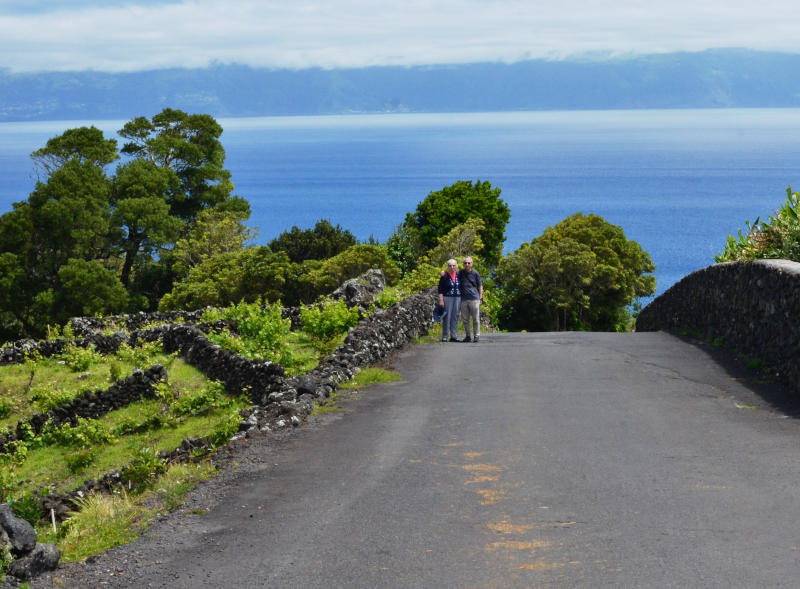
Pico in miniature: the sea behind and a small and scraggy vineyard on the left
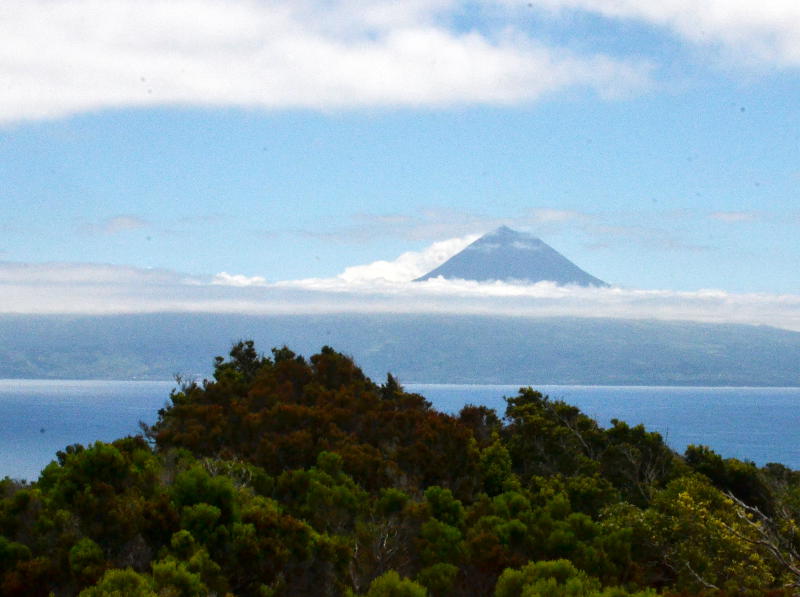
Pico mountain, the highest in Portugal, seen from the neighbouring island of São Jorge: the peak is often hidden in cloud
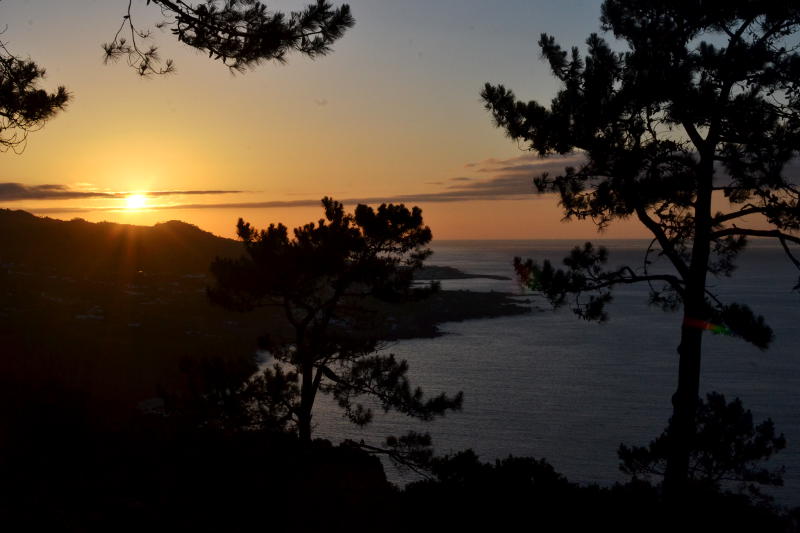
Sunset, with a view across to the island of São Jorge

Floral central reservation in a 'parque florestal'
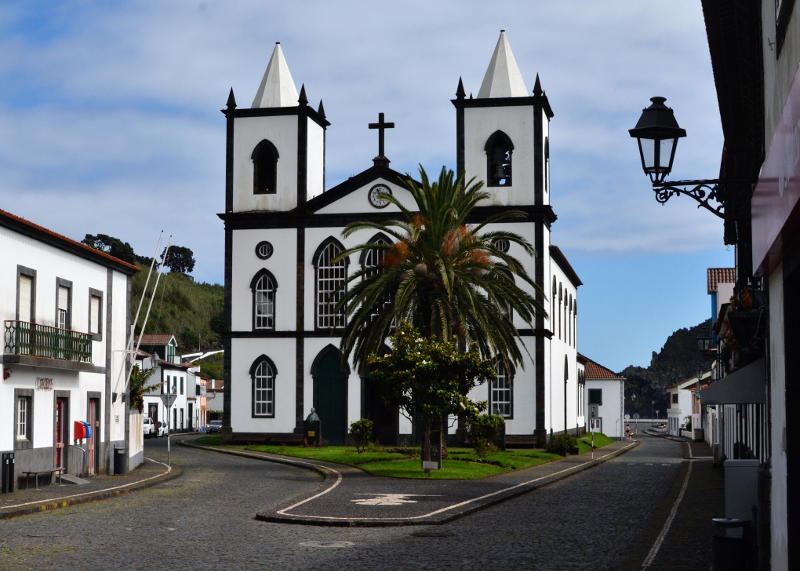
The church at Lajes looks like almost every other one in the Azores
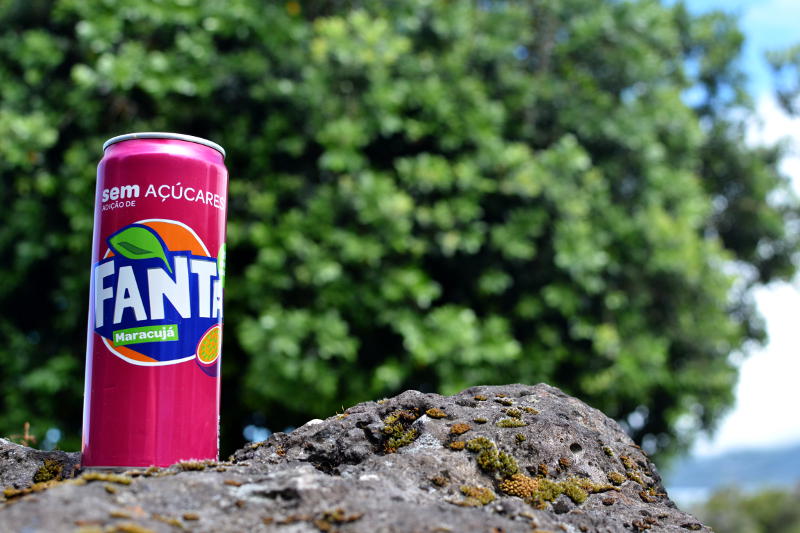
Fanta in maracujá (passion fruit) flavour: only sold in Portugal and Spain, according to the can. Why??
São Jorge
When we arrived to catch the ferry from Pico we were surprised to find the terminal building full of people, and speeches in progress. We were still able to buy tickets and make the crossing in the unexpected company of the President of the regional government as he inaugurated new terminals at each end of the route
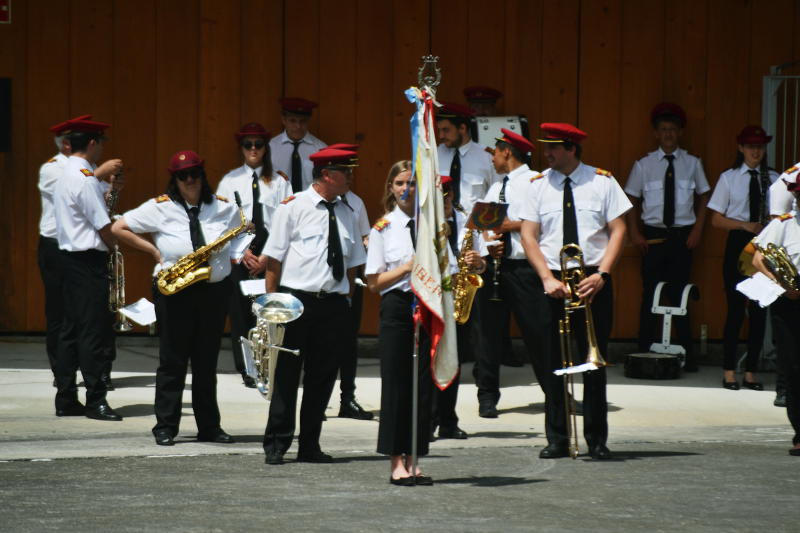
The band turned out to meet us
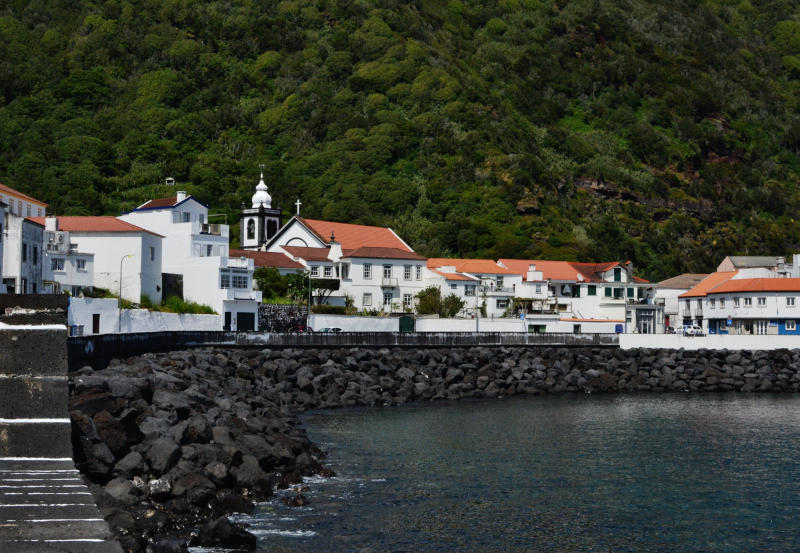
Seafront at Velas
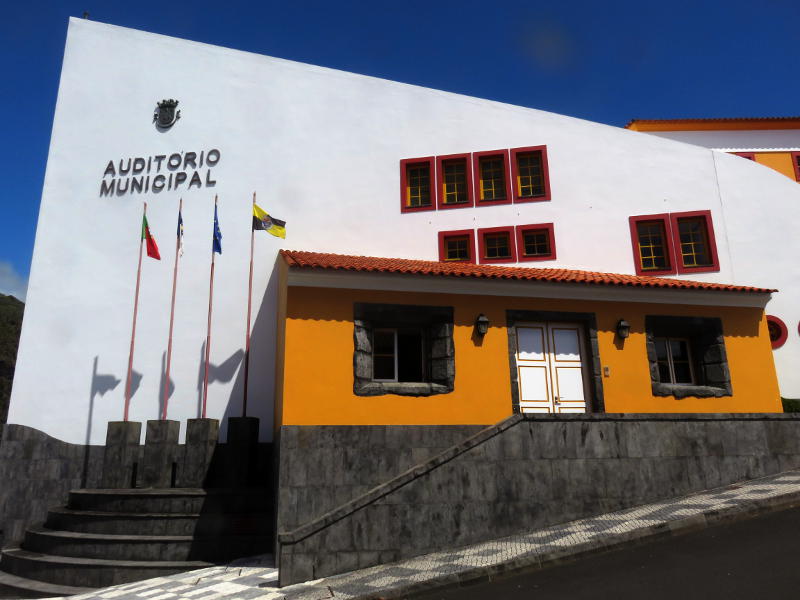
Impressive modern arts centre in Velas
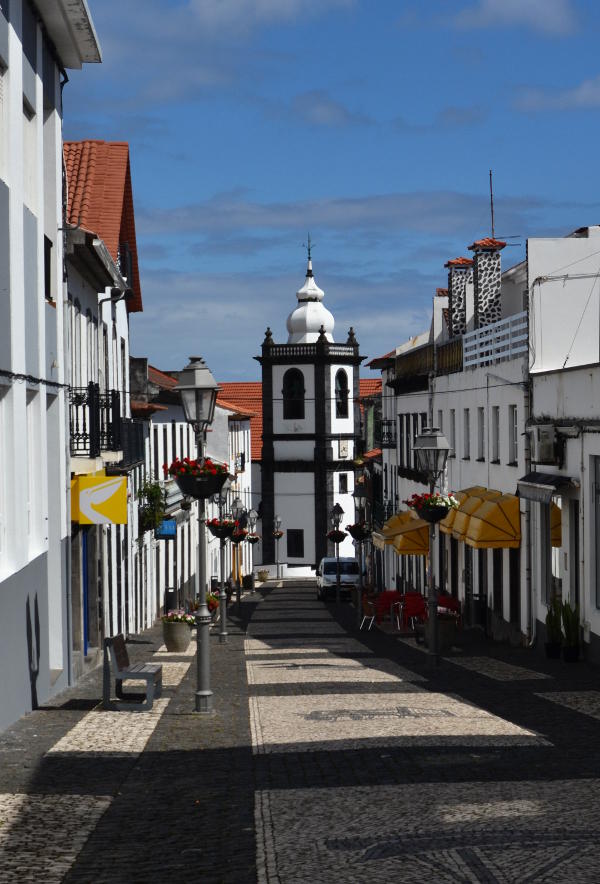
Looking towards the old centre of Velas
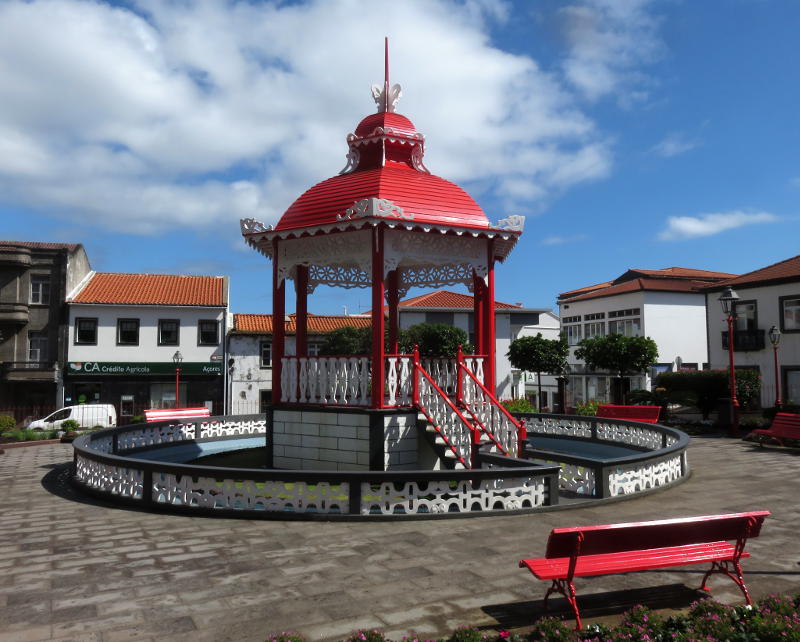
Bandstands are common in the Azores, and even some small villages have them
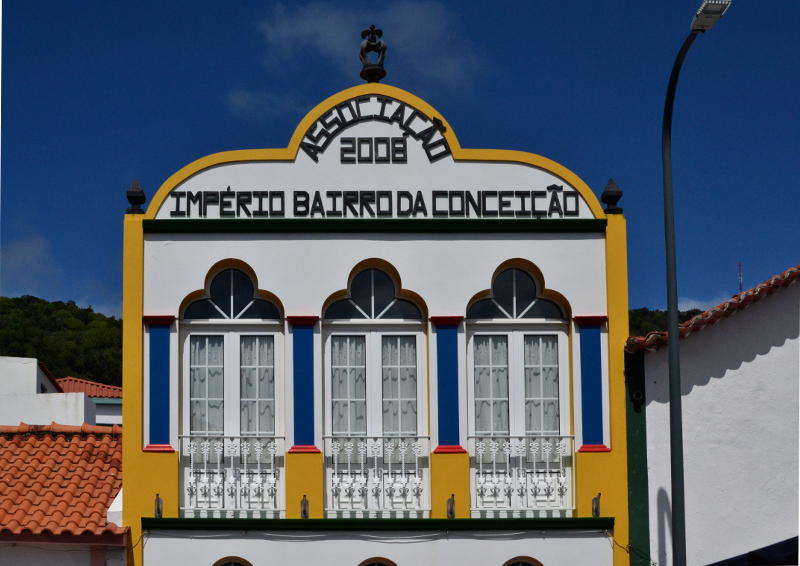
An império is a chapel dedicated to the Holy Spirit: this is one of the most modern we saw, but whatever their age, they are ornate, even garish
Faial
On our previous visit to the Azores we spent several days staying on Faial. This time we took the short ferry crossing to make a day trip from Pico. The main town, Horta, is a hub for yachts crossing the Atlantic or making other longer voyages.
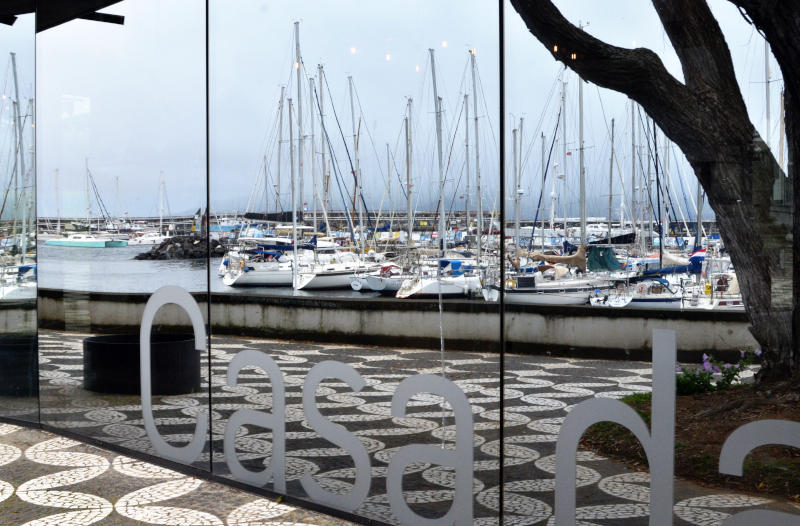
Back to front: reflection of the harbour in a restaurant window (hence the yellow lights)
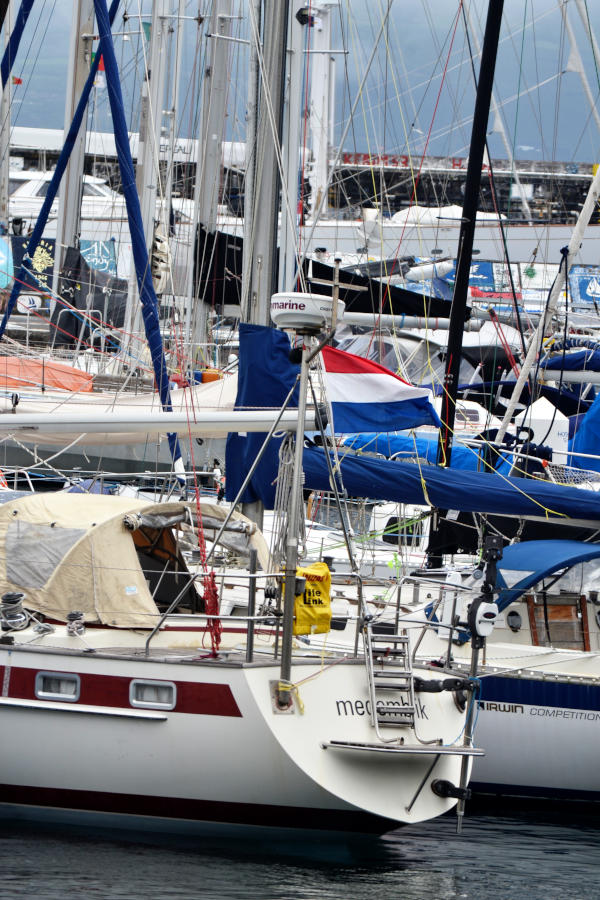
Expensive boatware in the crowded harbour
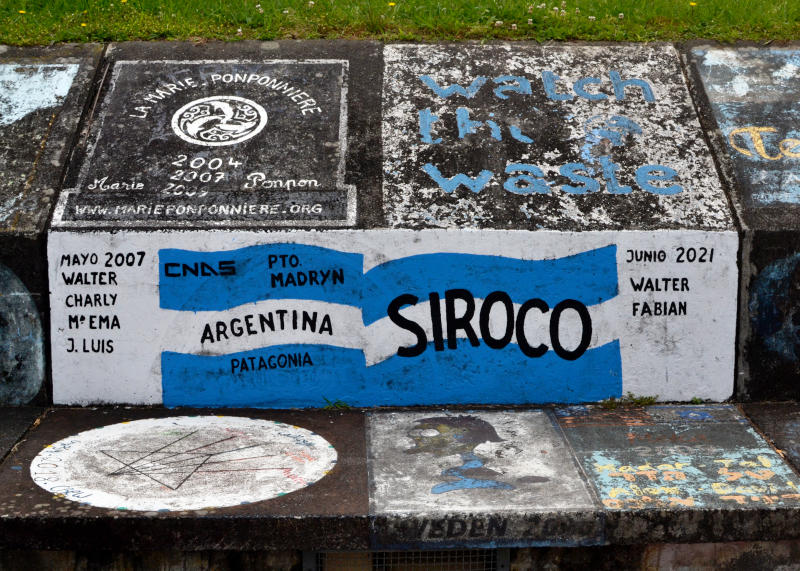
It is the custom for crews to mark their visits by painting on the harbour walls
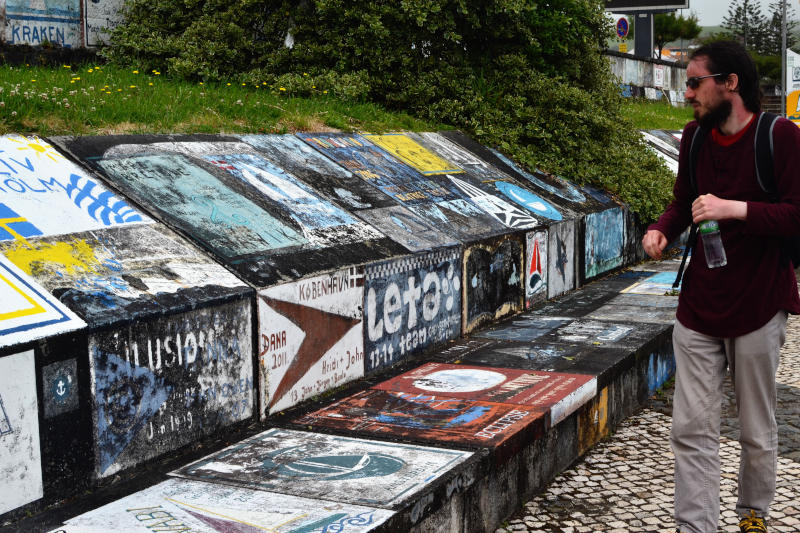
Martin inspects more paintings
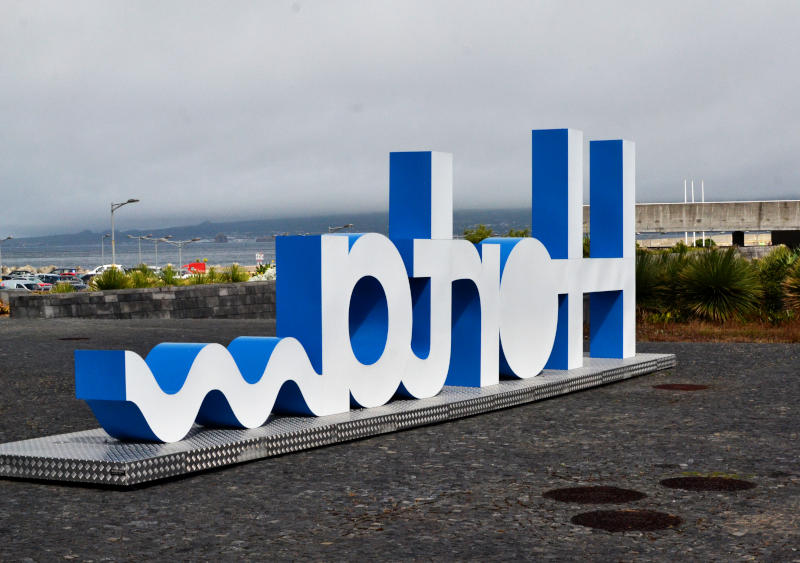
Horta, so good they named it backwards: "Which way round did you say you wanted the sign?"
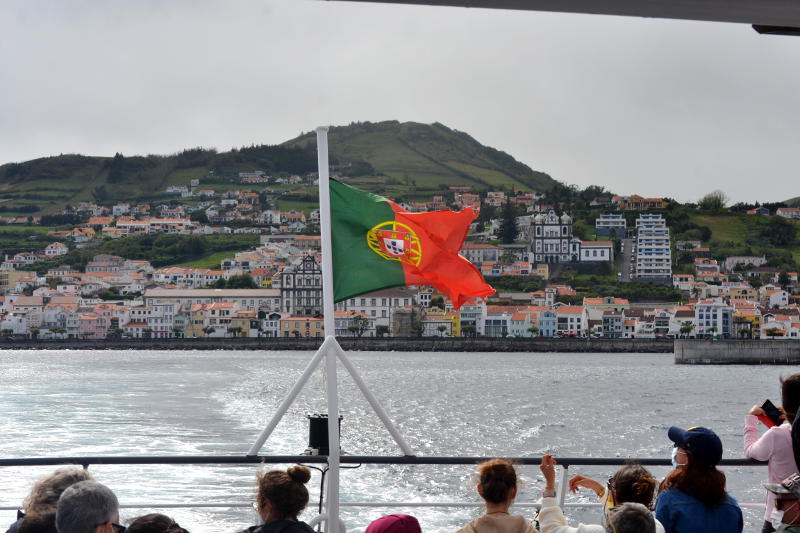
Departure from Faial: passengers watch the town of Horta recede into the distance
Graciosa
Graciosa is roughly the size of the city of Birmingham but has a population of only about 4000, scattered between many different villages
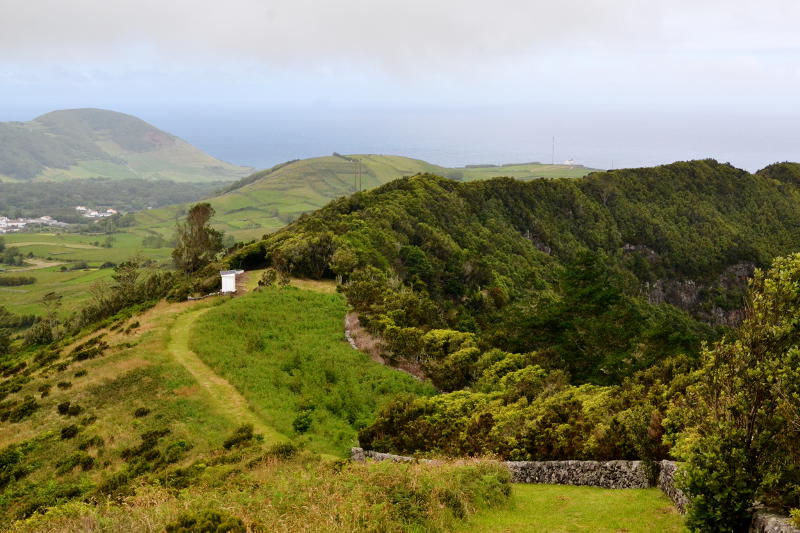
The edge of the caldera which dominates the south-east of the island
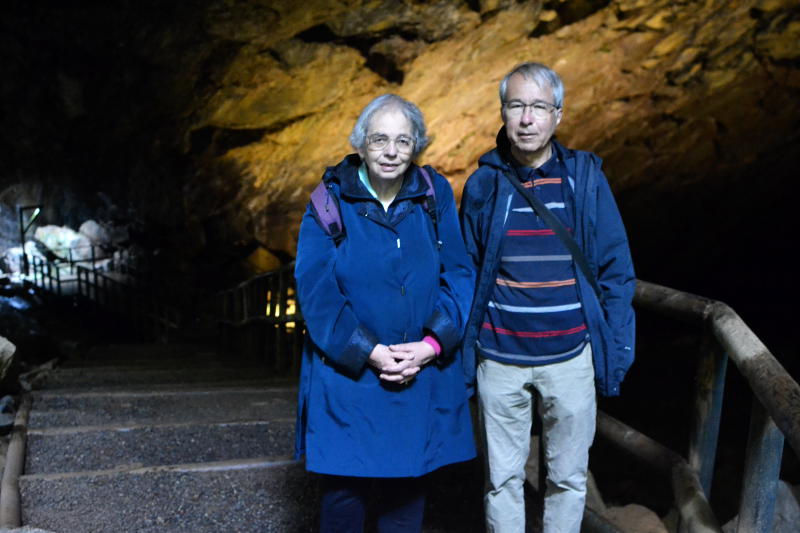
In a cavern deep in the heart of the caldera: at the back, gases bubble up out of the ground
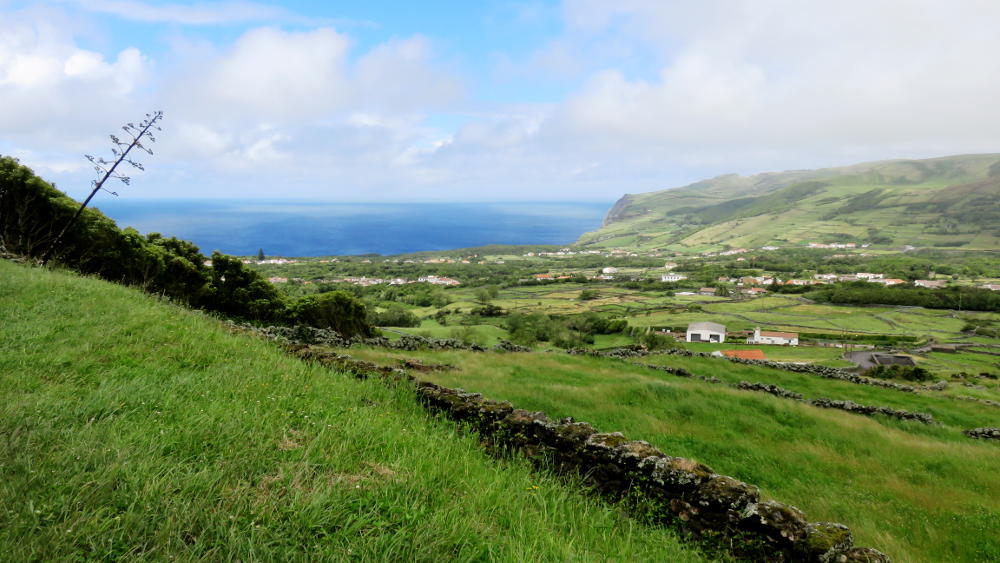
View towards the south coast of the island
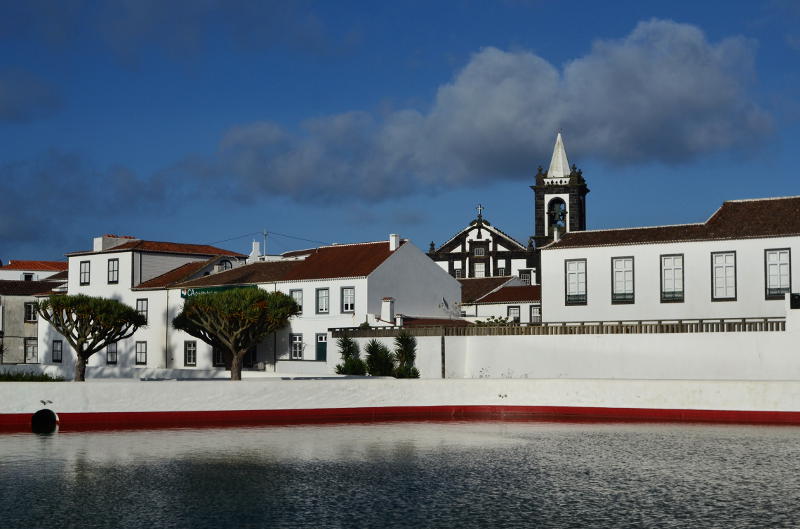
Part of the centre of Santa Cruz, the island's tiny capital
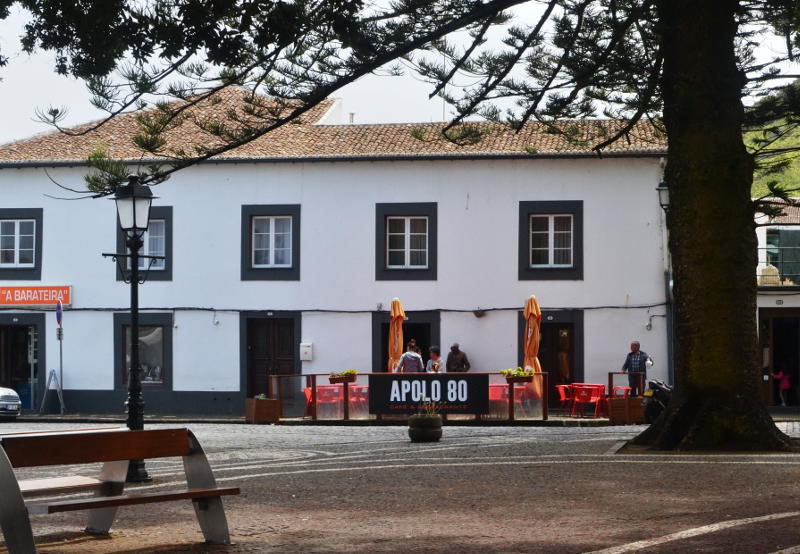
The modest exterior of a snack bar/restaurant in the town square: a supermarket is next door on the left
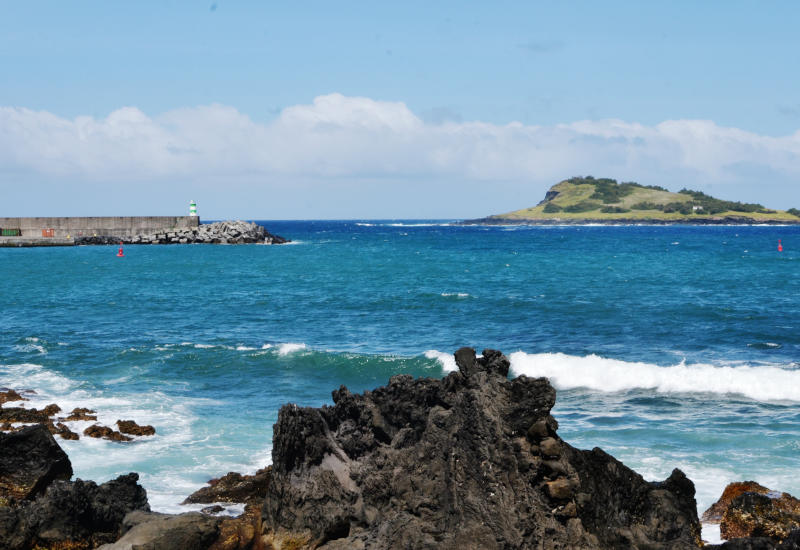
View from the village of Praia on the east coast
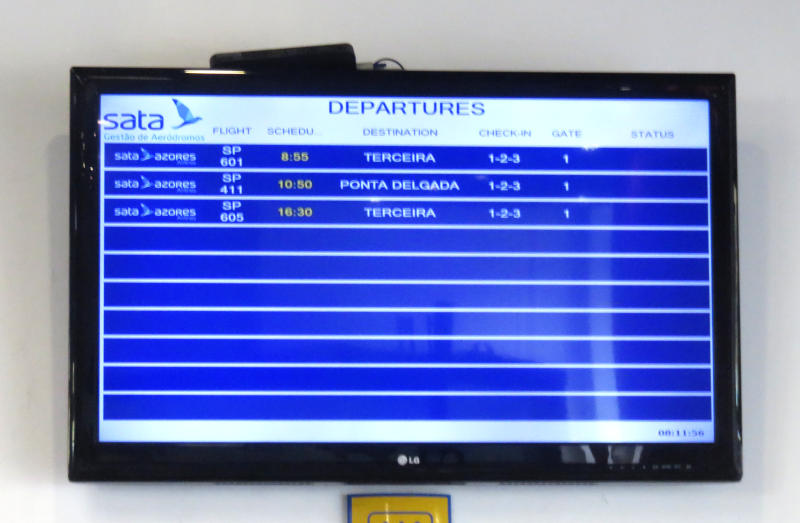
A busy day at Graciosa airport
Terceira
We stayed in the second largest town, Praia da Vitória, which is on the east coast
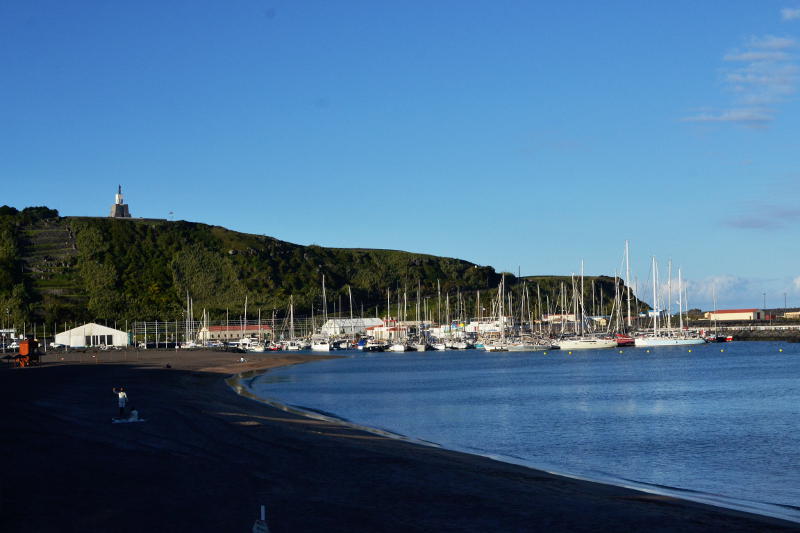
Praia da Vitória has a seafront with restaurants (unusual in the Azores) and a yacht harbour. On the cliff behind is a statue of Our Lady which can be reached via a long set of steps
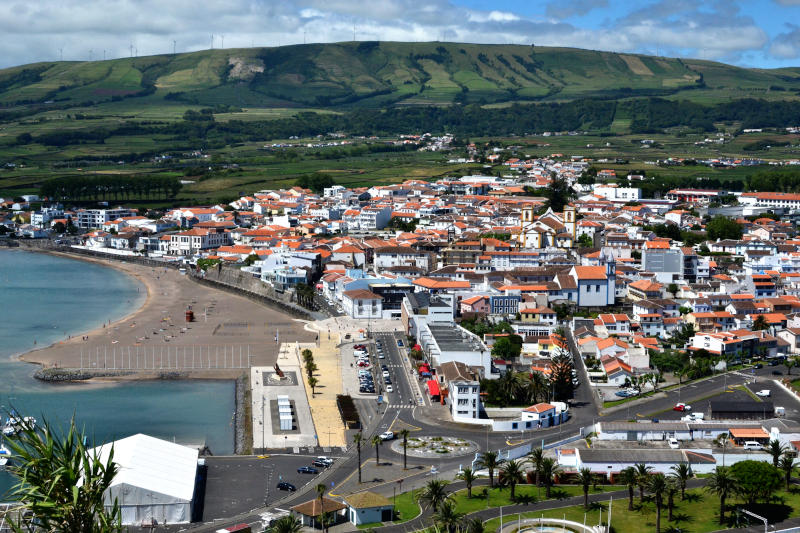
We climbed the steps to get this fine view over Praia da Vitória
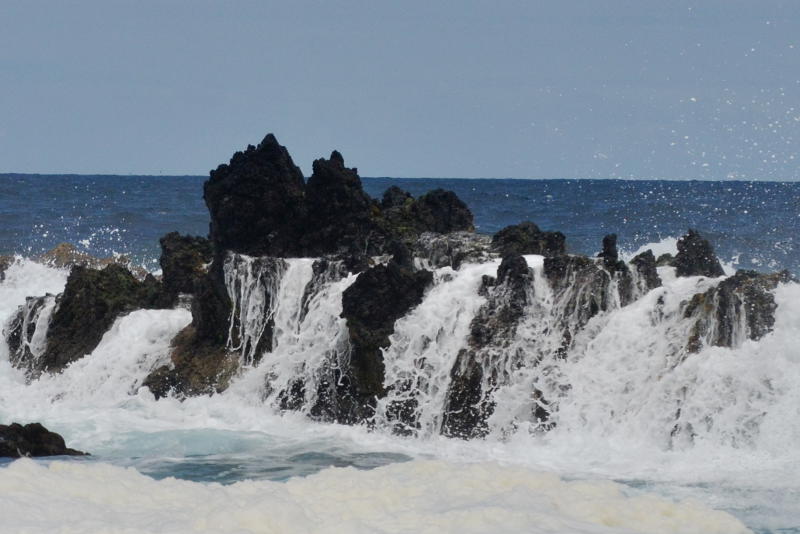
The ocean washes over lava rocks on the north coast at Biscoitos: further inland, behind a rock barrier, families bathe in pools in complete safety
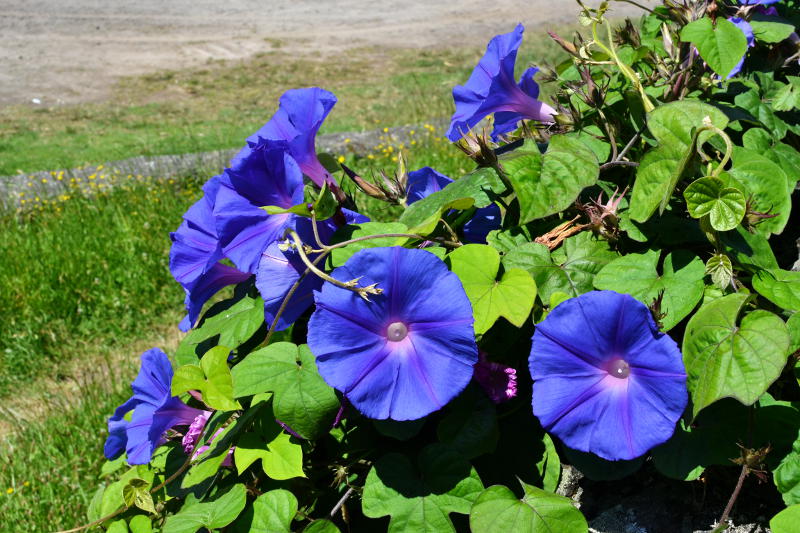
We thought this was an exotic form of bindweed but is actually called Morning Glory: it brightens up many stone walls

Rural Terceira, with a small island in the distance
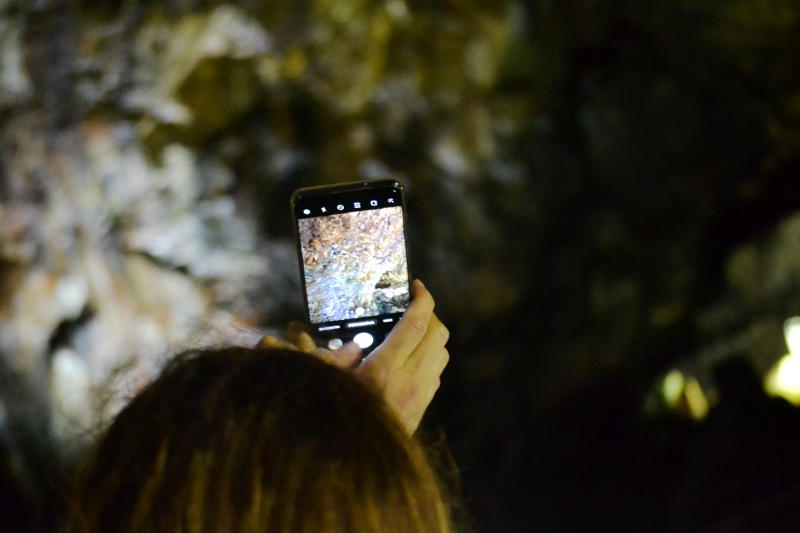
Visiting a cave system: reminders of the islands' volcanic origins are never far away
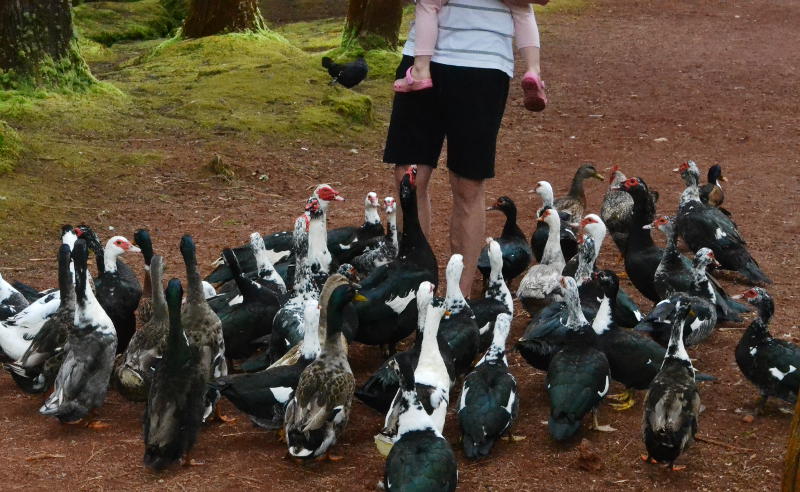
Wildfowl cadging from visitors at Lagoa das Patas
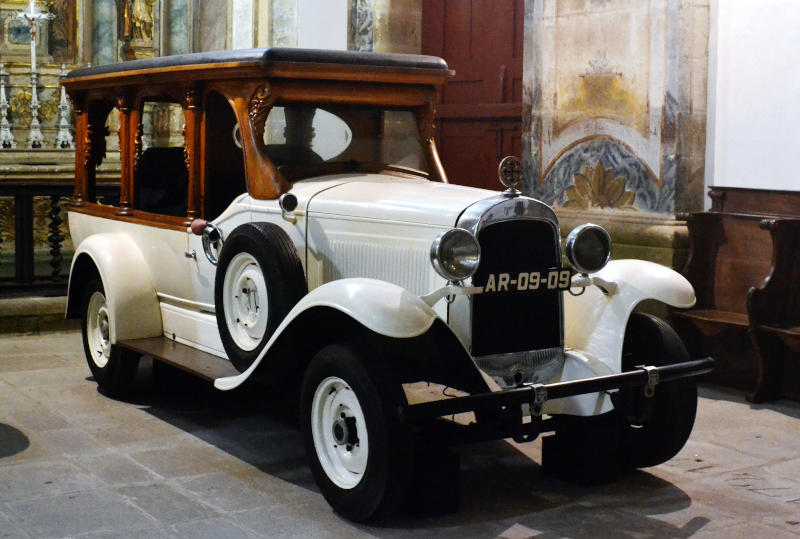
A former convent in the main town, Angra do Heroísmo, now houses a fine museum: this beautiful hearse stands at the back of the church
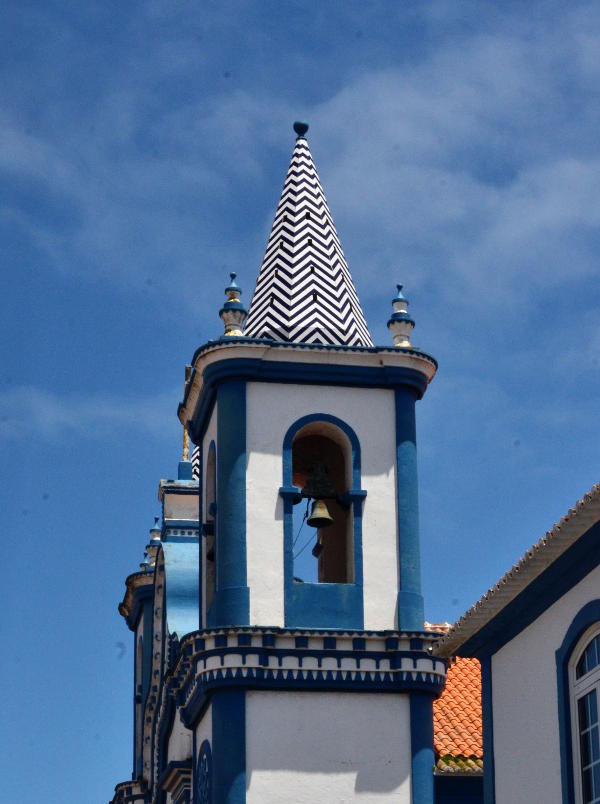
Some churches here are a little more colourful than on other islands
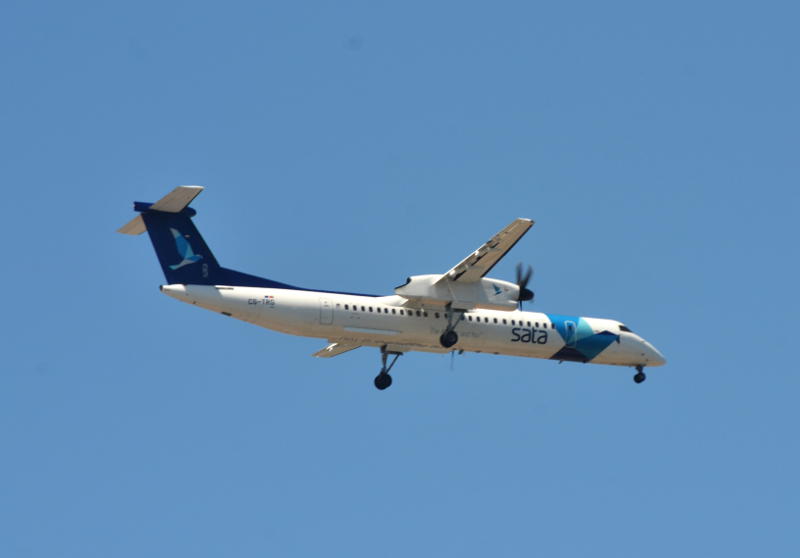
We were under the airport flight path: enough flights per day to be interesting, too few to be a nuisance. SATA is the regional airline, covering all 9 inhabited islands and connecting them with continental Portugal
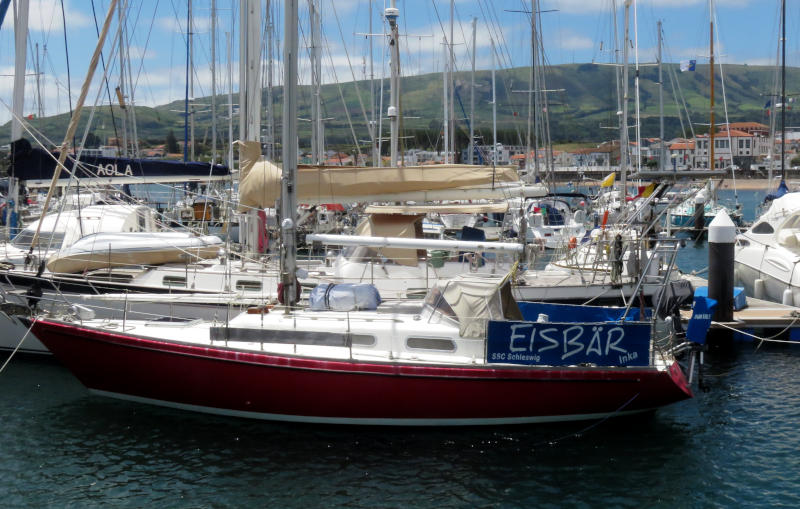
Polar bear in the Azores
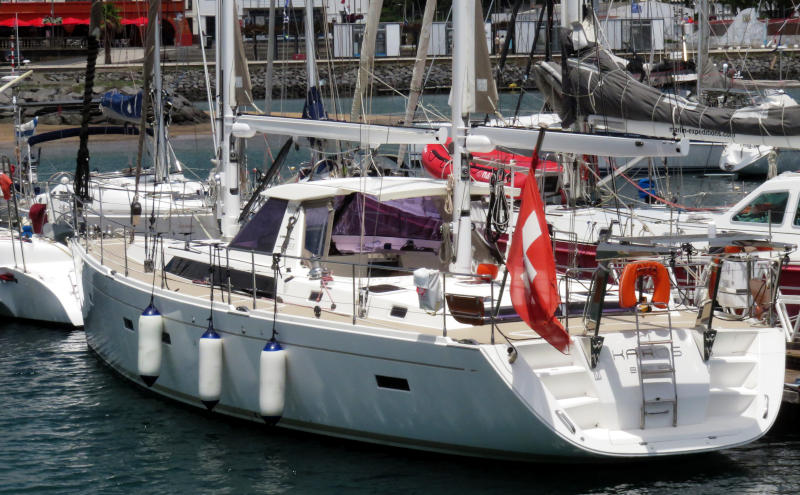
A nice way to travel if you can afford it
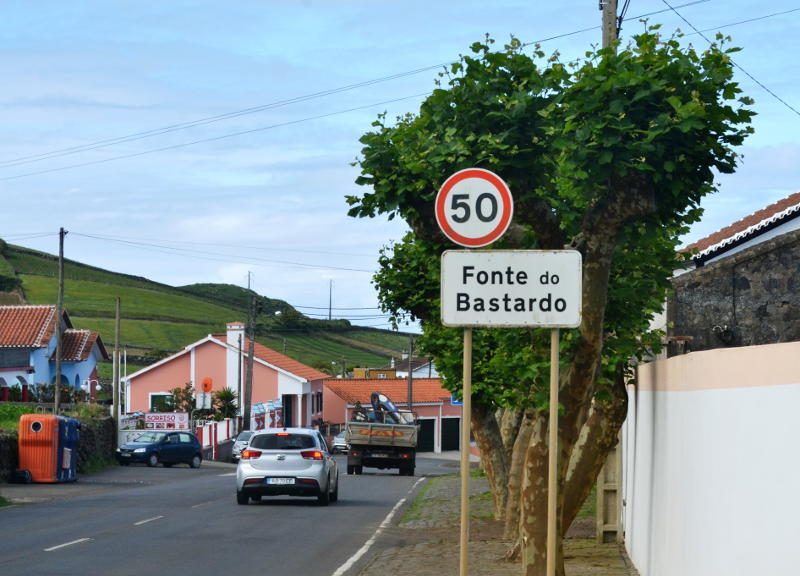
There has to be an explanation for this